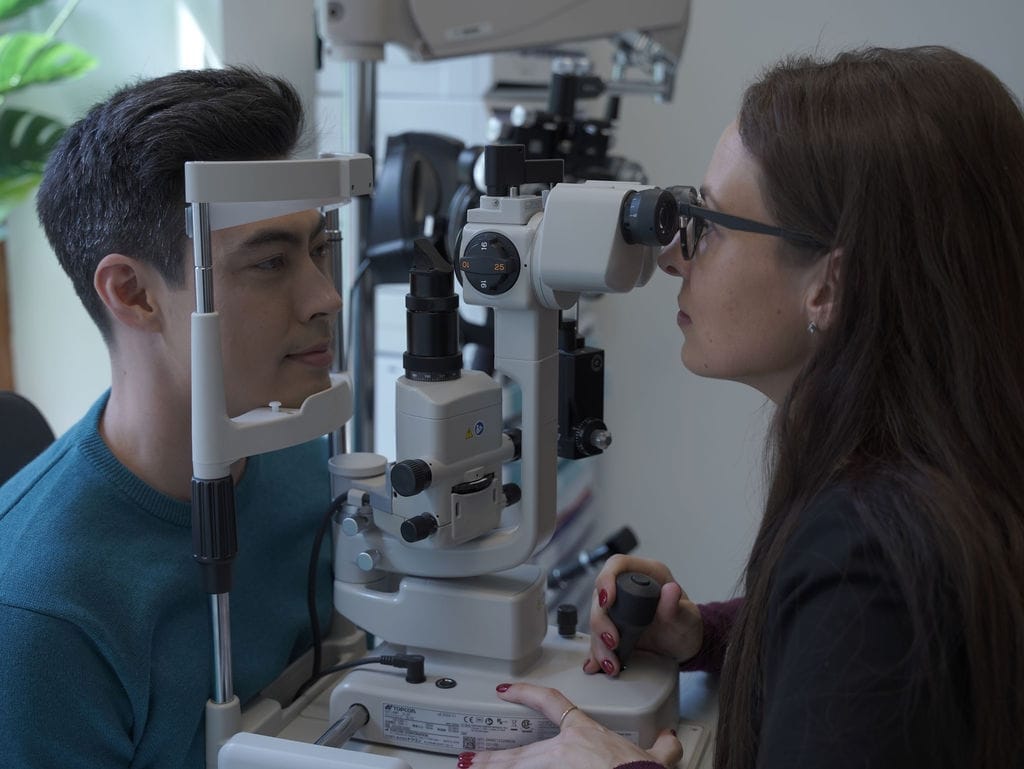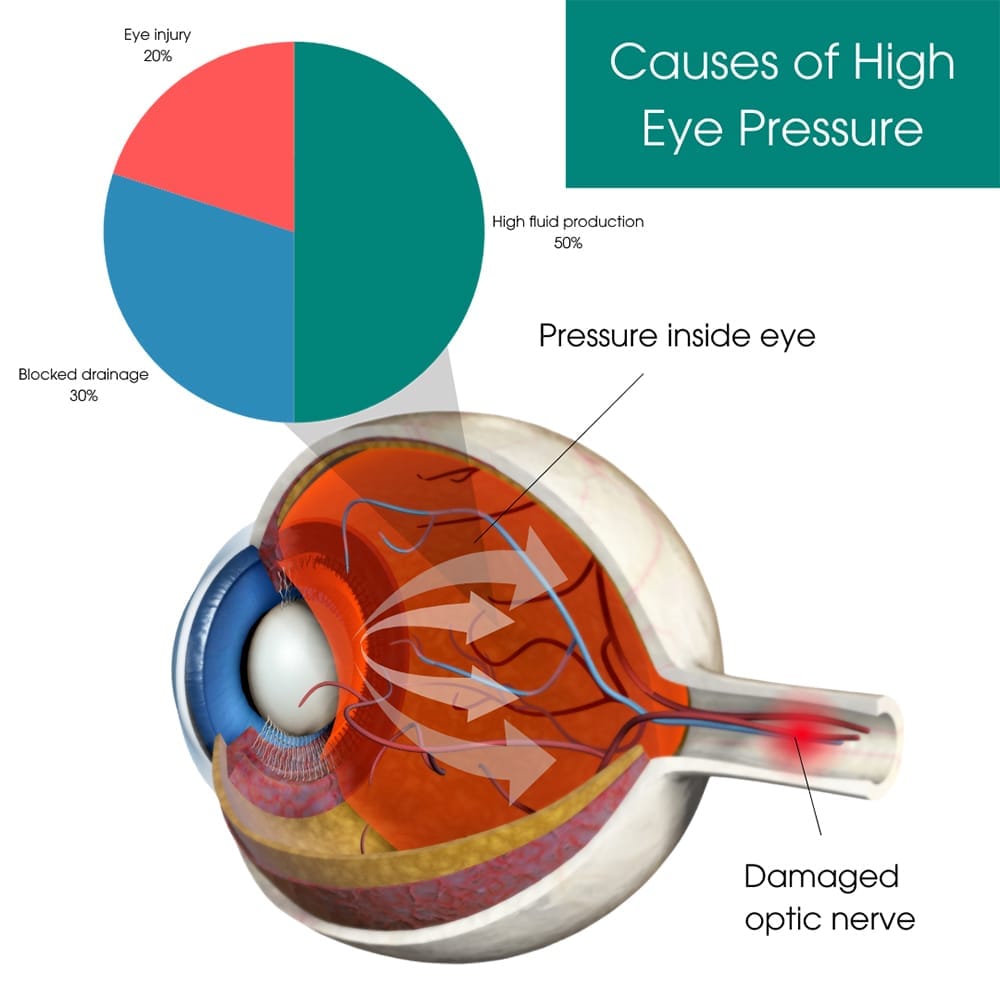 An eye pressure test, also called tonometry, measures the pressure exerted by the fluid inside your eye, which is known as intraocular pressure (IOP). Having regular eye exams is critical to make sure your eyes are as healthy as possible. This step to test eye pressure is an integral part of a comprehensive eye exam, which includes more than just a vision test.
An eye pressure test, also called tonometry, measures the pressure exerted by the fluid inside your eye, which is known as intraocular pressure (IOP). Having regular eye exams is critical to make sure your eyes are as healthy as possible. This step to test eye pressure is an integral part of a comprehensive eye exam, which includes more than just a vision test.
When you’re looking for the best option for family vision care in the Manhattan area, look no further than Eye Physicians. The practice includes skilled and experienced optometrists, ophthalmologists and pediatric eye doctors so that you and your loved ones can obtain top notch eye exams, treatments and emergency eye care.
During the day, your eye pressure fluctuates. In a healthy eye, fluid known as aqueous humor moves constantly through the eye and drains out. This fluid removes waste products, maintains the shape of the eye and lubricates the lens.
If you have high IOP, some of the possible causes may include:
If the fluid doesn’t leave the eye the way it should, pressure inside the eye increases, which is known as ocular hypertension. Abnormally high eye pressure can eventually damage the optic nerve and lead to glaucoma, or high eye pressure may be a sign of existing glaucoma. Since there are rarely symptoms of glaucoma, a test for eye pressure is the best way of detecting the development of this condition.

If you have high pressure inside your eyes, you can’t feel it. A tonometry test is done routinely to measure IOP and detect any changes in eye pressure. A healthy IOP is needed to preserve your vision and prevent vision loss from increased eye pressure.
A test for eye pressure is needed by:
Several different factors can increase the risk of developing ocular hypertension and possibly glaucoma.
These factors include:
A tonometry test isn’t usually performed on children unless the child has had cataracts or a family history of eye disease. But if you or your child is experiencing any symptoms that might indicate a change in IOP, a test for eye pressure should be done.
Things to watch for include:
An eye pressure test is a simple and painless portion of a comprehensive eye exam. To test eye pressure, a tonometry test measures IOP by flattening the cornea. If you wear contact lenses, they need to be removed before the test. Eye drops are administered to numb your eyes, usually 10 to 30 minutes before the exam.
Methods of doing an eye pressure test include:
Your NYC eye doctor learns the results of your eye pressure test right away. Normal eye pressure is usually between 10 and 21 mmHg, which means millimeters of mercury. In general, eye pressure higher than 21 mmHg is considered ocular hypertension. Every person’s normal eye pressure is different and your eye doctor determines the measurement that’s normal for you.
If your reading is abnormal, it’s a sign there may be a problem with your eye health and other tests may be recommended. Abnormal results may be an early indication of glaucoma or a sign of eye inflammation. If you’ve experienced a trauma to your head or eye, blood may collect between the front part of the eye and the iris, which is known as a hyphemia, and it may cause increased eye pressure.
The treatment of high eye pressure depends on the underlying cause and how abnormal the reading is.
Treatment options include:
Ocular hypertension can damage the optic nerve and may contribute to the development of glaucoma, but not everyone who has ocular hypertension develops glaucoma. Early diagnosis of high eye pressure followed by effective treatment can stop damage from progressing and preserve your vision. The goal of treatment is to lower the pressure in your eyes and prevent damage to the optic nerve.
Regular eye exams, including an eye pressure test (tonometry), are important for detecting glaucoma in adults. Symptoms of glaucoma may not appear until there’s been vision loss, so it’s crucial to have your eye pressure test done regularly to make sure they’re healthy. Your eye doctor will recommend a tonometry testing schedule based on your age, risk factors, and overall eye health. Don’t delay seeing an eye care specialist to determine your appropriate testing schedule.
If you’re looking for eye professionals with the expertise to perform an accurate eye pressure test, pediatric eye exams or other eye procedures such as stye removal, astigmatism correction, laser photocoagulation and more, the best option in New York City can be found at Eye Physicians. For accurate diagnosis and treatment of eye conditions and to protect the health of your eyes, contact the Manhattan team of experts to schedule an appointment today.
Eye Physicians
110 Lafayette St, Suite 503
New York, NY 10013
(212) 292-4814
Entrust the care of your precious eyesight to highly skilled and experienced eye care professionals. For top-notch ophthalmologists and optometrists in Downtown Manhattan, choose Eye Physicians. Eye Physicians ensures prompt care, precise diagnosis, and personalized treatment plans.
Schedule an Appointment